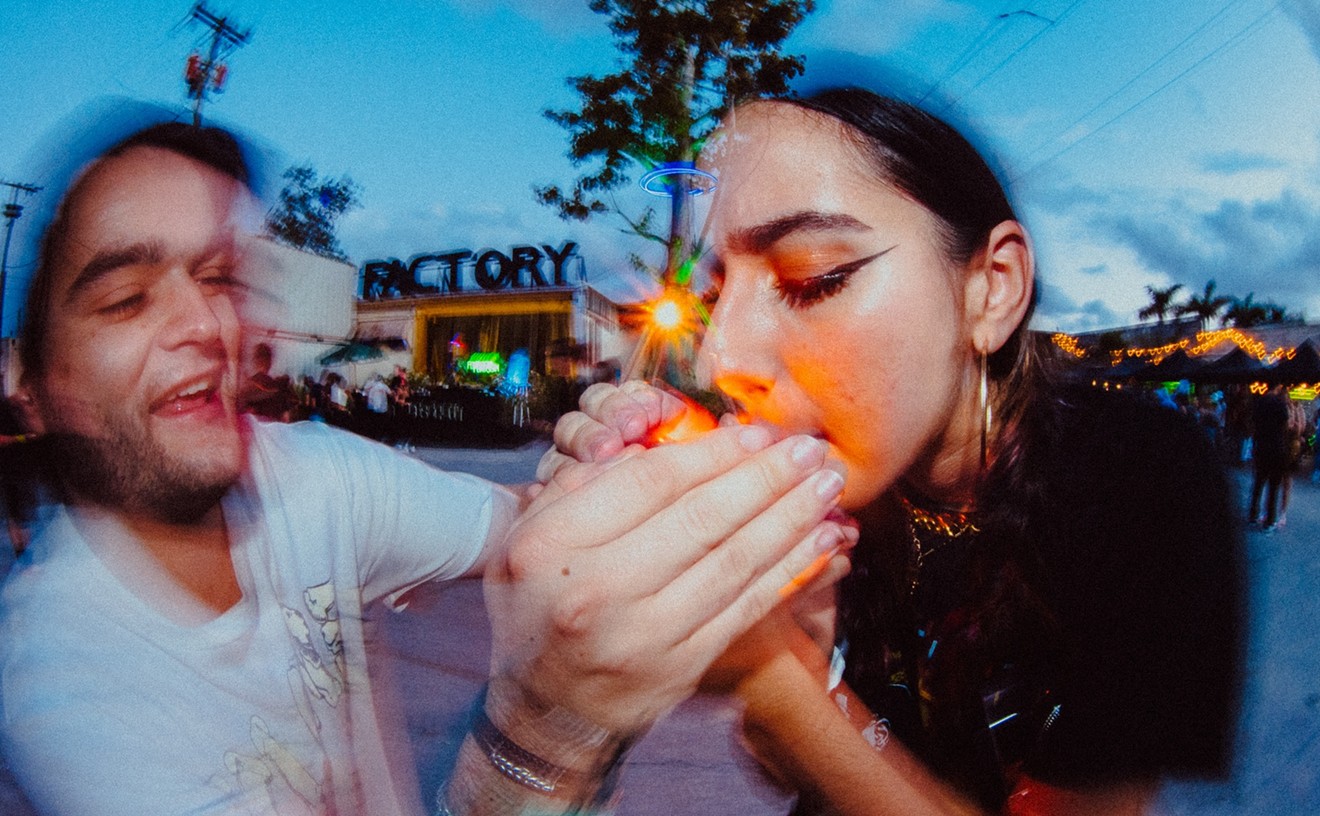In a city that seems to have little value for its history, the Olympia Theater is an anomaly.
Since 1926, it's been entertaining residents, first as a movie palace and vaudeville stage, then as a performing arts center after 1975.
But what has remained constant all those years is the theater's stunning Moorish architecture and simulated night sky. Olympia is a breathtaking example of an atmospheric-style theater — the ornate design is meant to transport the patron to a different time and place.
"The architecture of the building is absolutely beautiful," says Robert Geitner, executive director for the Olympia, as he sits down in the theater's mezzanine to talk with New Times. "It certainly makes you feel special when you're in the building, so that also contributes to it."
Olympia holds the distinction of being the first theater in the South to have air conditioning, certainly a much-embraced luxury back in 1926. It's also one of only two remaining atmospheric theaters in Florida. Atmospheric theaters first emerged in America in the '20s and were a grand departure from typical movie theaters and small-town opera houses. They featured intricate and stunning architecture that gave audiences a sense of space rather than confinement. Olympia's sister, the Tampa Theater, was designed a year after its sibling and bares a close resemblance. It was designed by Olympia architect John Eberson — who invented the atmospheric style.
Olympia's history pretty much mirrors Miami's boom-and-bust cycle. In 1975, businessman and philanthropist Maurice Gusman saved the theater from demolition and donated it to the City of Miami. With the help of architect Morris Lapidus (of Fontainebleau and Lincoln Road fame), the theater was renovated. However, the venue struggled, and after the Mariel boatlift, the city's demographics changed, and it fell into disrepair by the late 1980s.
"Big theaters like this were closing and being torn down all over the country, but Miami in particular," says Geitner. "We see the whole downtown period in the '50s and '60s start to fade off as the suburbs start to take over. By the '70s, downtown was starting to get a little rough. It terms of what was going on [at Olympia], the theater certainly had seen better days."
However, in 1989, with the help of architect Richard J. Heisenbottle, the Olympia was slowly restored to its former glory and — due to the age of the building — much of that maintenance and upkeep still goes on until this day.
"There's a thing about a building like this: It has to have people that love it all the time in order to keep it," admits Geitner. "In order to make people love it, you have to get people engaged with the building. The best way to do that is to get them inside the building."
Olympia is certainly in the best position it has been in the past few decades to attract a whole new audience. According to the Miami Downtown Development Authority, since 2000, the population has doubled to 80,750 in 2014. At the same time, households in the area increased 134 percent to 41,773, so the Olympia has a potential captive audience bigger than it's ever seen.
So how does the theater plan on getting people in seats?
"We have a series of concerts that we do in our lobby space. We set up a smaller cabaret setup in the lobby," says Geitner. "We start it with an evening of jazz, and by February 2016, every Wednesday there will be a different themed night. We call it 'In the Lobby Lounge,' and it's very much a lounge experience. The bars are open, there's no cost of admission, and we present free entertainment."
Beyond that, the theater is also home to regular programming and is perhaps best-known as the main venue for the Miami International Film Festival. It also regularly hosts dance performances, operas, standup comics, and its own annual film series, Recent Cinema From Spain.
However, what really has the venue buzzing these days are the live performances. In May, a performance by Neutral Milk Hotel kicked off a string of amazing bookings that include Kraftwerk (September 29), the Jesus and Mary Chain (October 2), and Sufjan Stevens (November 7). If the theater is attempting to appeal to a hipper, edgier crowd, it's certainly succeeding.
"For the last couple of years, there's been an opportunity to reexamine the Olympia Theater in the context of its neighborhood. We've learned a lot... We don't do this ourselves. We work with AEG Live on shows. We work with Shock Entertainment on our Latin shows. Some of our edgier world-music stuff with the Rhythm Foundation and Poplife is working with us as well. Certainly sales are telling us that we're heading the right direction on that and audiences are appreciative."
For a building that is 90 years old, it certainly seems that Olympia is just starting to realize its full potential. So what's next for the iconic theater?
"Our dream goal for the 100th year is that we have a fully revitalized theater and building that's restored and is extremely active. We are on that path now."
[
{
"name": "Air - MediumRectangle - Inline Content - Mobile Display Size",
"component": "19274298",
"insertPoint": "2",
"requiredCountToDisplay": "2"
},{
"name": "Editor Picks",
"component": "17482312",
"insertPoint": "4",
"requiredCountToDisplay": "1"
},{
"name": "Inline Links",
"component": "18711090",
"insertPoint": "8th",
"startingPoint": 8,
"requiredCountToDisplay": "7",
"maxInsertions": 25
},{
"name": "Air - MediumRectangle - Combo - Inline Content",
"component": "17482310",
"insertPoint": "8th",
"startingPoint": 8,
"requiredCountToDisplay": "7",
"maxInsertions": 25
},{
"name": "Inline Links",
"component": "18711090",
"insertPoint": "8th",
"startingPoint": 12,
"requiredCountToDisplay": "11",
"maxInsertions": 25
},{
"name": "Air - Leaderboard Tower - Combo - Inline Content",
"component": "17482313",
"insertPoint": "8th",
"startingPoint": 12,
"requiredCountToDisplay": "11",
"maxInsertions": 25
}
]











